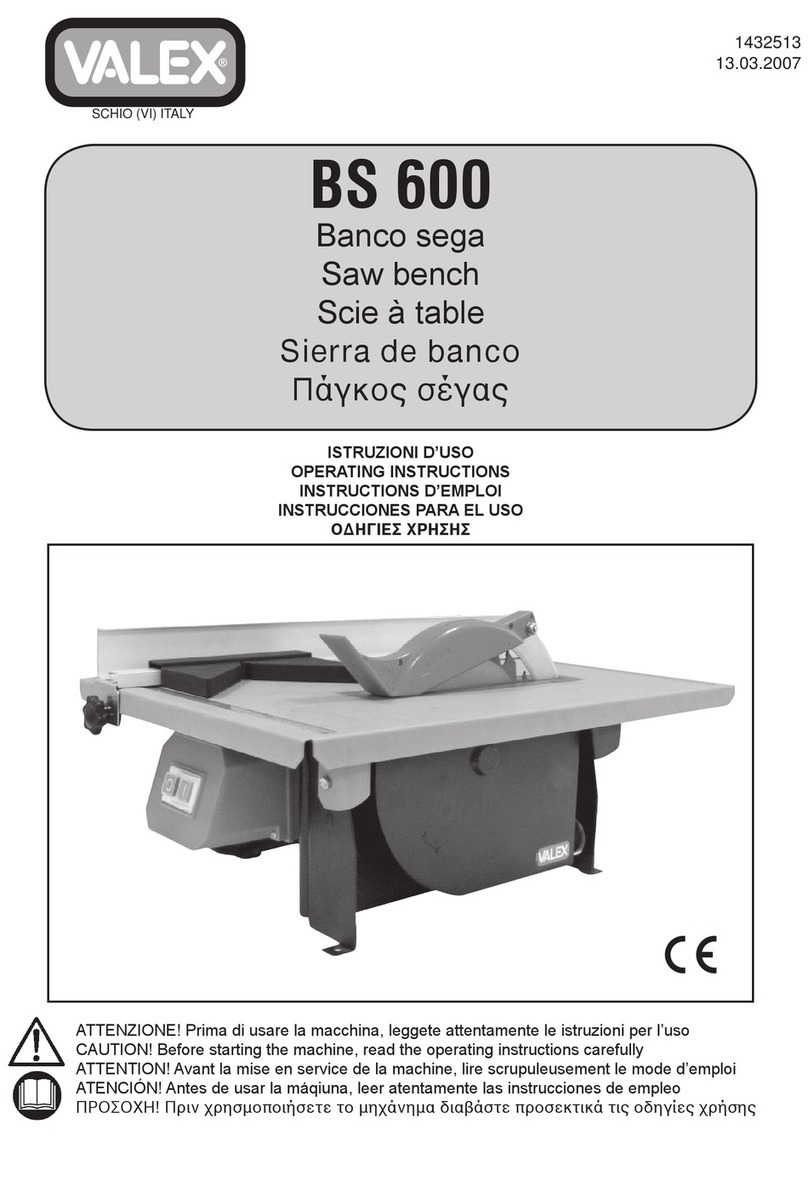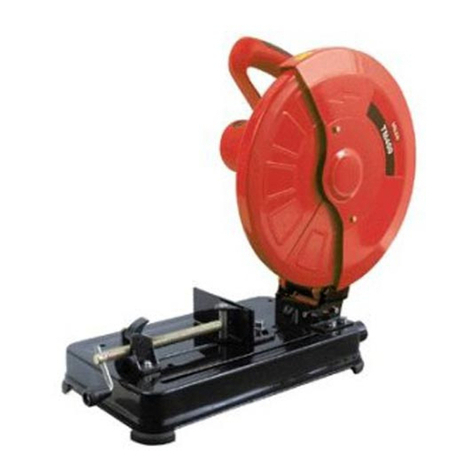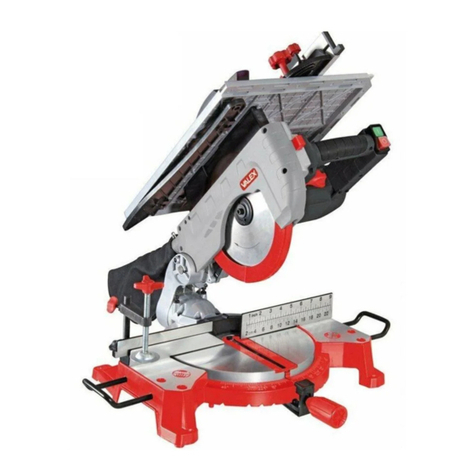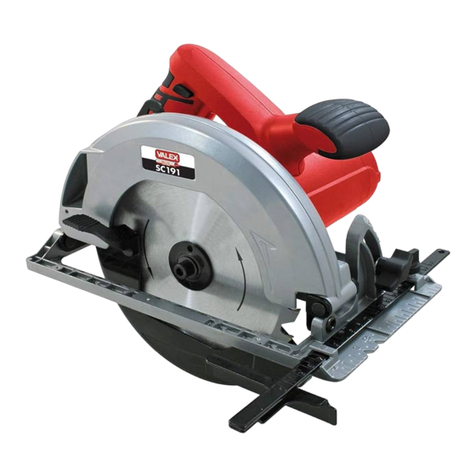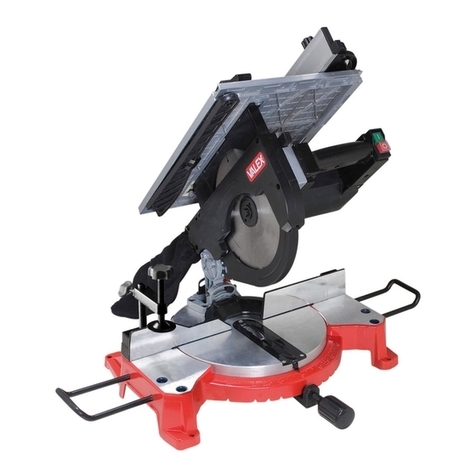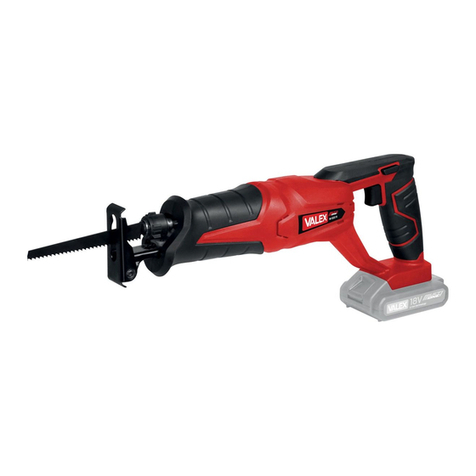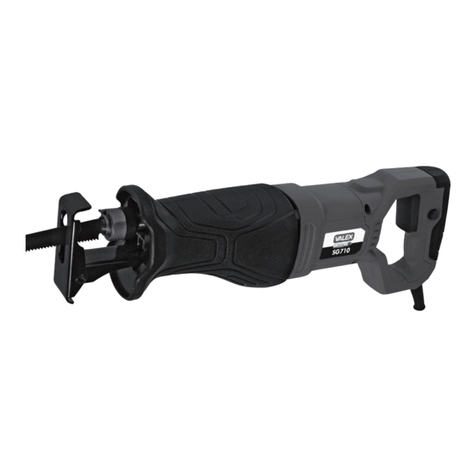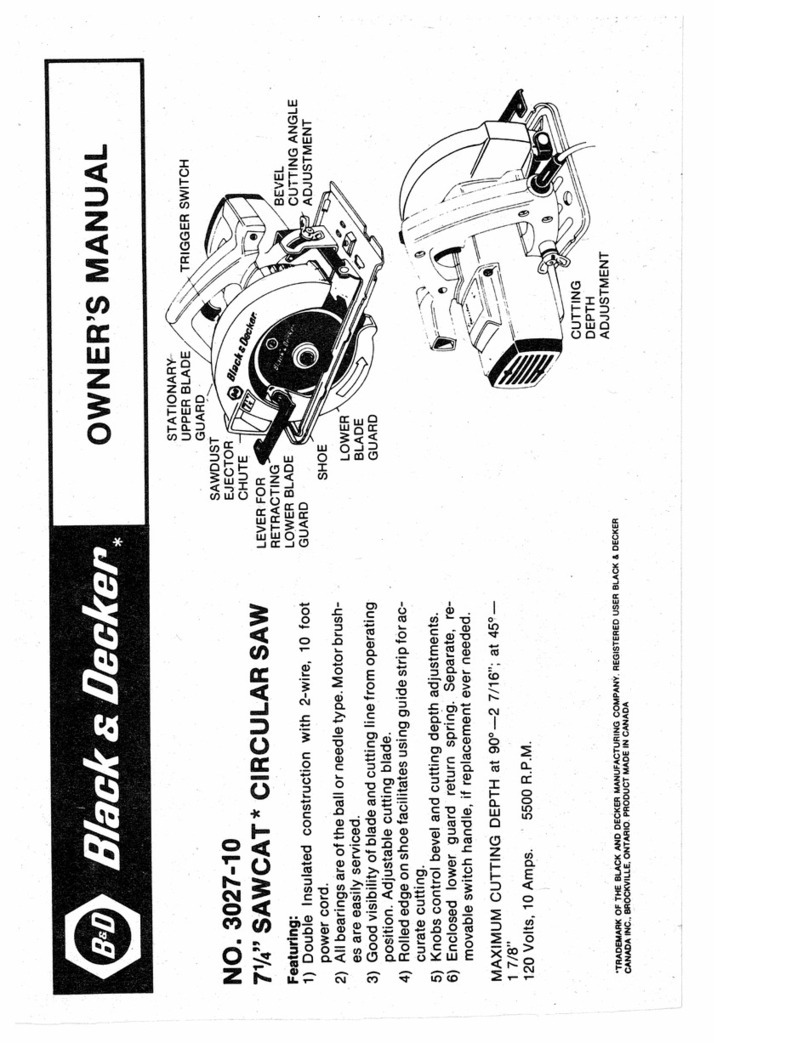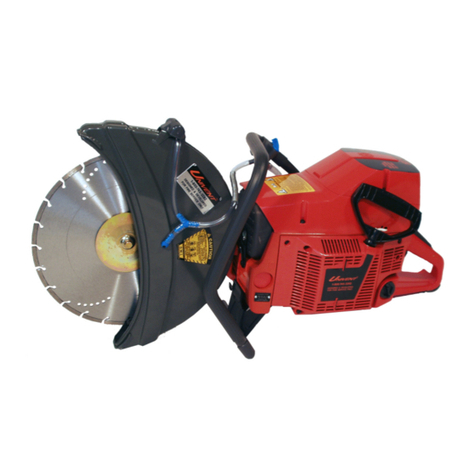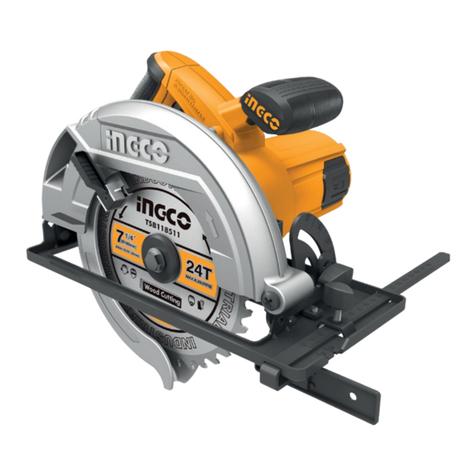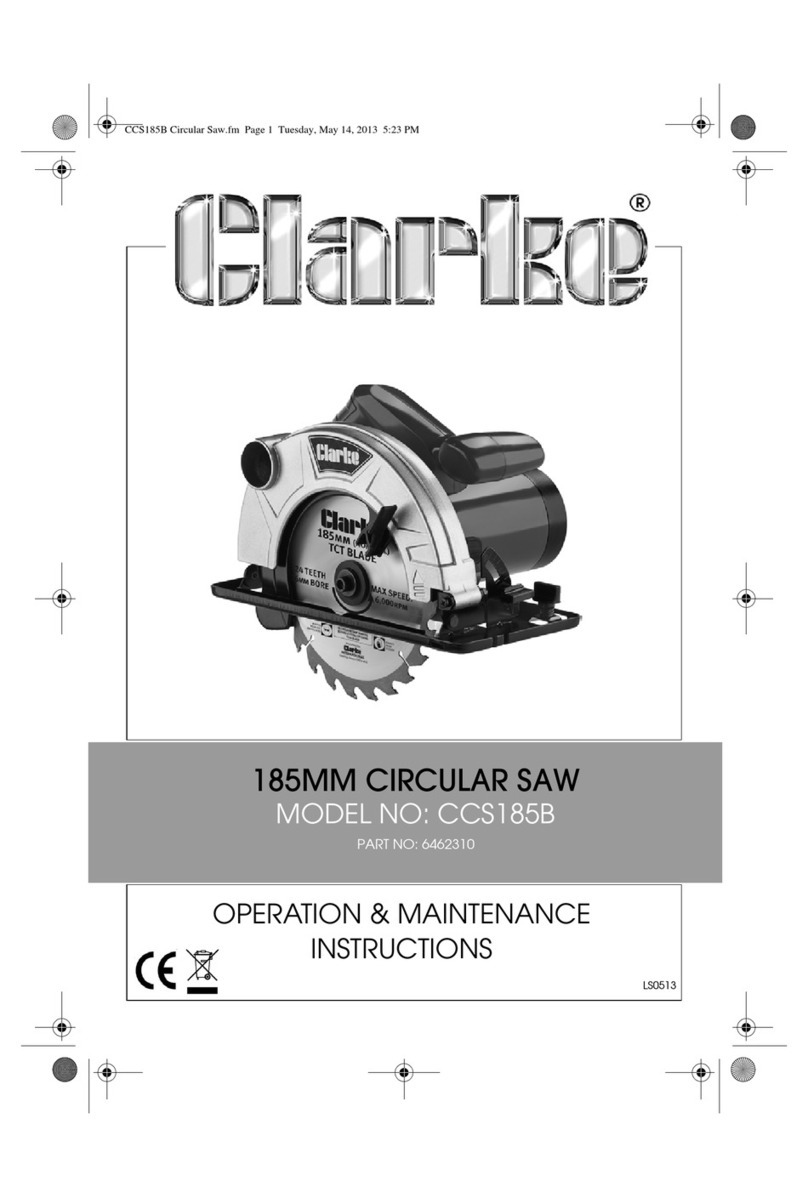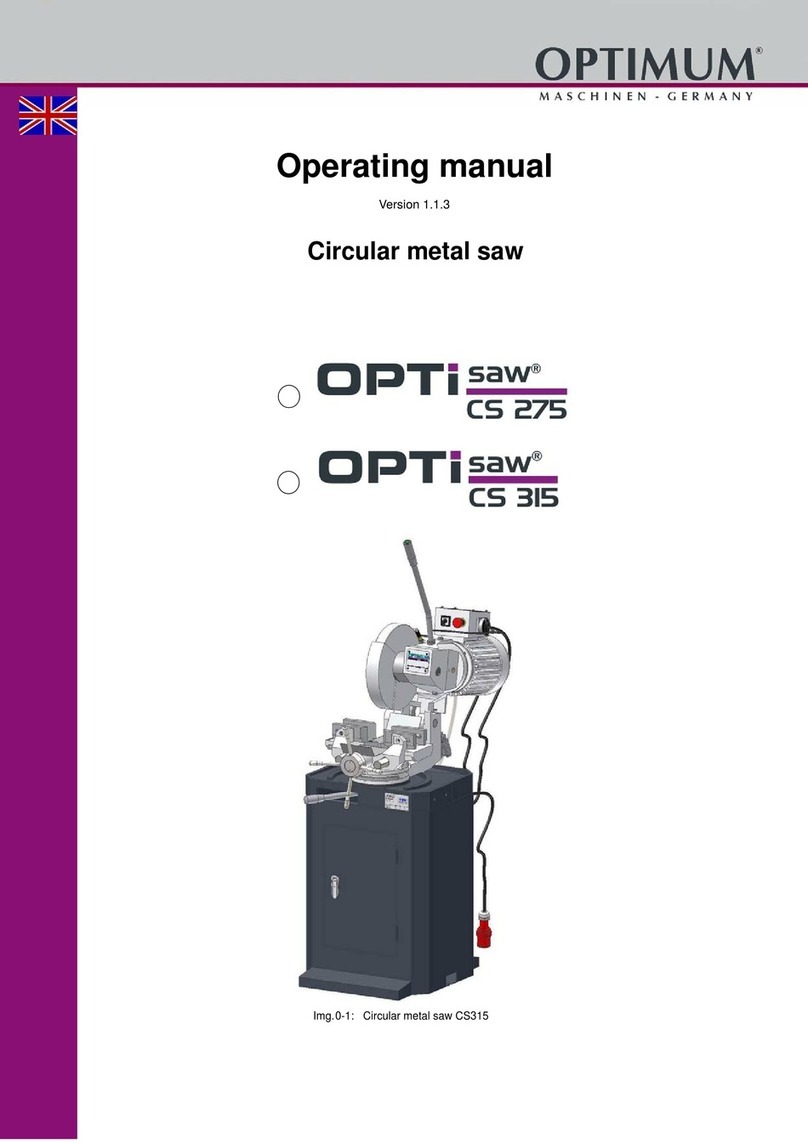
- 10 -
elettrica (pos.8).
2) Impugnate saldamente l’impugnatura po-
steriore (pos.5) e anteriore (pos.4) senza
premere l’interruttore (fig.C).
3) Premete in sequenza il pulsante di sicurezza
(pos.7) e il pulsante dell’interruttore (pos.6).
L’interruttore è del tipo ad “azione mante-
nuta”; pertanto l’utensile elettrico rimarrà
acceso per il tempo che voi mantenete pre-
muto l’interruttore.
Arresto
Per arrestare rilasciate il pulsante dell’interruttore
(pos.6) mantenendo ben salda la macchina.
Vi consigliamo di ripetere queste operazioni
alcune volte prima di iniziare il lavoro in modo
da familiarizzare il più possibile con i comandi.
Se osservate delle anomalie di funzionamento
spegnete l’utensile elettrico e consultate il capi-
tolo “Problemi, cause e rimedi”.
Quando non lavorate spegnete e staccate la
spina dalla presa.
ISTRUZIONI D’USO
ATTENZIONE! Prima di effettuare le se-
guenti operazioni assicuratevi che la spina
sia scollegata dalla rete elettrica.
Dopo aver letto attentamente i capitoli prece-
denti, seguite scrupolosamente questi consigli
che vi permetteranno di ottenere il massimo
delle prestazioni.
Procedete con calma in modo da prendere
familiarità con tutti i comandi; solo dopo aver
acquisito una buona esperienza riuscirete a
sfruttarne a fondo tutte le potenzialità.
REGOLAZIONE DELLA PROFONDITÁ DI TAGLIO
Si ottiene variando la sporgenza della lama
rispetto alla piastra di guida.
Sbloccate la leva regolazione altezza di taglio
(pos.17) e spostate la piastra di guida (pos.3)
verso il basso per diminuire la profondità di ta-
glio, verso l’alto per aumentarla. Fissate bene la
leva dopo aver regolato la piastra di guida nella
posizione desiderata.
La profondità massima di taglio si ottiene con
inclinazione a 0°. Adattate la profondità di taglio
allo spessore del pannello da tagliare; fate
sporgere la dentatura solo per alcuni millimetri
e in ogni caso per una misura inferiore all’altezza
della dentatura.
REGOLAZIONE INCLINAZIONE DI TAGLIO
Si ottiene inclinando la piastra di guida rispetto
alla lama.
Allentate volantino anteriore (pos. 2) e inclinate
la piastra di guida per ottenere l’angolo di taglio
desiderato. Fissate bene il volantino/i dopo aver
effettuato la regolazione.
Con angoli maggiori di 0°, la profondità di taglio è
minore di quella indicata nella scala della pos.17.
USO DELLA SQUADRA DI GUIDA (Fig.A e Fig.D)
La squadra di guida (pos.11) serve per eseguire
tagli paralleli al bordo del pannello.
Per regolare la distanza del taglio dal bordo del
pannello, allentate il volantino (pos.12) e fate
scorrere la squadra nell’apposita guida; con-
trollate la distanza di taglio sulla scala graduata.
Fissate bene il volantino dopo la regolazione.
Nel caso dobbiate eseguire un taglio parallelo,
ad una distanza superiore a quella massima
consentita dalla squadra di guida, utilizzate un
listello fissato con dei morsetti (non forniti) da
impiegare come guida di taglio parallelo, vedasi
Fig.D.
MARCATURE DELLA ZONA TAGLIO (pos.22)
Le due scanalature ricavate sulla piastra di gui-
da indicano la posizione della lama in caso di
taglio perpendicolare con angolo a 0° o angolo
inclinato a 45°. E’ consigliato verificare il corretto
allineamento eseguendo prima un taglio di prova.
PANNELLO IN LAVORAZIONE
Il pannello che tagliarete dovrà avere spessore
compatibile con la sega circolare.
Sul pezzo segnate con una riga la linea di taglio
e posizionatelo sopra dei cavalletti. Sotto il
pannello, in corrispondenza della linea di taglio
non dovrà esserci nessun ostacolo.
Attenzione! Per la vostra sicurezza è impor-
tante che il pannello sia fissato stabilmente,
in modo da non cadere una volta tagliato con
pericolo per l’operatore. Non tagliate pezzi
a sez. circolare, legni vecchi o fragili, legni
irregolari, legni con crepe, legni con chiodi
o viti, rami o tronchi. Effettuate sempre uno
scrupoloso controllo visivo.
ESECUZIONE DEL TAGLIO
Alcuni tipi di pannelli potrebbero scheggiarsi
nella zona di uscita della lama: abbiate cura di
eseguire il taglio appoggiando l’utensile sulla
parte meno importante del pannello.
Fissate accuratamente il pezzo da tagliare, ese-


